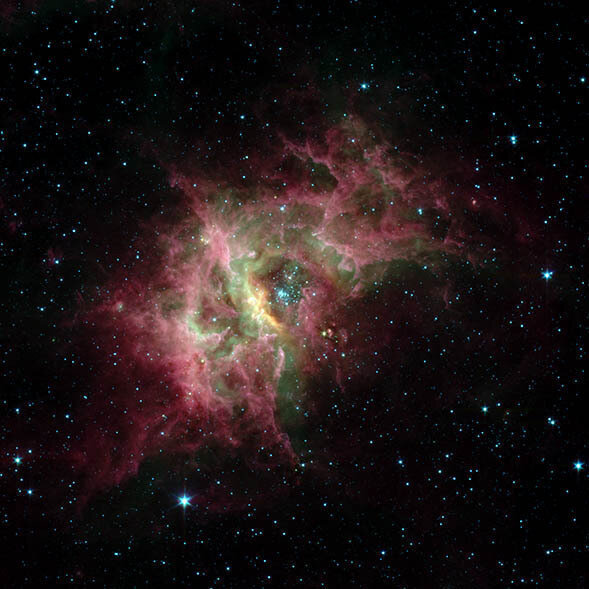Habitability around F-class Stars
Some years back I read a science fiction story in which the planet where the action took place orbited an F-class star. That was sufficiently odd to get my attention, and I began to pay attention to these stars, which represent on the order of 3 percent of all stars in the galaxy. Stars like our G-class Sun weigh in at about 7 percent, while the vast majority of stars are M-dwarfs, still our best chances for life detection because of the advantages they offer to our observing technologies, including deep transits and lower stellar brightness for direct imaging purposes.
F-stars are intriguing despite the fact that they tend to be somewhat larger than the Sun (up to 1.4 times its mass) and also hotter (temperatures in the range of 6200-7200 K). Back in 2014, I looked at the work of Manfred Cuntz (University of Texas at Arlington), who had performed a study examining radiation levels in these stars and the damage that DNA would experience with an F-star in the sky at various stages of stellar evolution. We’re dealing here with a shorter life expectancy than the Sun, usually reckoned in the range of 2-8 billion years on the main sequence depending on mass.
We’re also dealing with a larger habitable zone, a width 1.5 to 4 times greater than in the case of the Sun, again depending on the mass of the star and the climate models used to calculate the HZ. So there are advantages, for in the 2014 work, Cuntz and team found that the outer regions of the HZ experience tolerable levels of UV radiation. Now Cuntz has pushed the F-star work forward with a new paper, working with lead author Shaan Patel, a UTA grad student, and colleague Nevin Weinberg. The new work embarks on a statistical analysis of planet-hosting F-class stars drawn from data in the NASA Exoplanet Archive, which is a resource I don’t link to often enough. Says Cuntz:








/cdn.vox-cdn.com/uploads/chorus_asset/file/25638926/1240308371.jpg)






/cdn.vox-cdn.com/uploads/chorus_asset/file/25639220/DCD_Zuckerberg_2024.jpg)







